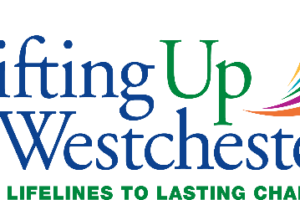New York State continues to be one of the top three most highly taxed states in the Union. Taxing authorities at all levels within the State have worked hard to provide a relatively good quality of life, generous social/ general government services, adequate education offerings/performance and a suitable transportation infrastructure.
However, there has not been as much energy expended on creating financially viable delivery methods for these services as there has been on developing and providing the solutions.
We know that taxing jurisdictions operate their budgets much differently than a corporation. In a viable, well-managed corporation, goals are created for how the company can continue to be profitable and what it will take to for it to grow. However, these goals are always dealt with in the context of the fiscal constraints of what the company is able to support. When companies take on initiatives beyond what their financials can bear, and do so year after year, they will eventually go bankrupt and cease to exist.
Much like the business world, taxing authorities at the federal, state and local levels develop budgets that take shape around goals and priorities that each representative body deems to be required and/or a list of enhancements or capital improvements to undertake for the benefit of their constituents. However, this model breaks down when these taxing bodies come up with budgets that exceed what their tax revenue can support. In these cases, they merely bridge the gap by increasing taxes. They pay lip service to trimming the budget and cutting costs but are very reluctant to sacrifice any services and do little to renegotiate the contractual obligations that they claim to be bound by. A number of years ago, the “Big Three” auto makers had come to multi-year agreements with labor on compensation and benefits, that they subsequently learned made them less cost competitive as the cost of each car was inflated by $1-2000 to cover the benefit costs for their employees. As a result, the American auto makers lost significant market share, and their performance has suffered accordingly. Out of necessity, they are now in the process of renegotiating these contracts and are holding firm on benefit and compensation cuts to become competitive again. Many thought the unions had the auto manufacturers’ hands tied and that there was nothing that could be done in terms of concessions; but, when faced with certain job cuts, the unions came to the table and were willing to compromise.
This being said, it appears that finally the endless pleas from the taxpayer are being heard up in the executive offices of the State government in Albany. Governor Patterson has publicly endorsed, and the State Senate has passed, the school funding cap bill as a way to keep a lid on spending, and retain citizens who are moving out of the State to avoid the painfully high taxes. School districts within Westchester County have improved many of their facilities and expanded their curriculum; however, they have imposed a serious financial burden on taxpayers as they have done little, if anything, about their expense structure. There is no real incentive for these school boards to keep their expenses in check, because if their district votes operating or capital budgets down, they merely threaten their constituents with an austerity budget, which eliminates many sports and arts programs, which are among the most rewarding activities of a student’s school experience. There is little effort or focus on how to cut personnel/staffing costs to provide budget relief for district taxpayers. For example, several years ago I approached the Board of Education for the Tarrytowns and asked them how much their staff contribute to their health care costs, since most employees in the business world today are contributing 30-40 percent or more of their premium with high family deductibles. Their answer was: approximately 10 percent, but that was an area that they were going to work hard on to get a higher participation rate. I recently inquired to see what kind of progress they have made and I was told it may be a percentage point or two higher. It is this lack of tangible effort and progress on the expense side of the equation that makes it necessary for the State to set budget constraint parameters within which school districts will have to operate. School districts across the State have been given the autonomy to fund their yearly operations in a reasonable way and, left unchecked, have created a tax burden that many residents cannot continue to financially support or afford. This model needs systemic change or it is just plain unsustainable.
During the initial stages of the school building campaign, committees were formed using hand picked individuals in the community. It was very clear that the Board had no interest in inviting those of us who were questioning and challenging the size and scope of the project to participate in the process. As a result of the insular composition of these groups, their findings were slanted and laden with unrealistic assumptions. This resulted in the implication that the tax revenue resulting from the waterfront development in both villages would offset the costs of the project and the tax impact would be negligible. Even though many of us in the community voiced our concerns that their timeline was overly aggressive and not possible, the Board was ultimately successful in passing a scaled down proposition which only included certain campuses instead of attacking all the schools at one time as they originally planned. Now since the GM development did not come to fruition, and is actually further away from being completed than it was back then, we are very fortunate that this grass roots, watchdog group challenged the premises put forth by this Board. It still remains to be seen how much of a tax burden this project will create since our economy is experiencing it’s first retraction in quite some time and our credit markets are fighting through one of the most turbulent periods on record. It is this kind of unbridled spending by school districts that will be kept in check by the proposed school funding legislation
I applaud the scrutiny and prompt action by our Governor in making this one of the first State initiatives of his young administration. If maintaining residence in New York State for the foreseeable future is going to be a financially viable option, then it is incumbent upon us to contact our legislators and voice our support for this proposition. The electorate has been patient in their hopes that local school districts will find a way to fund themselves in a responsible way, but clearly this has not happened, and the time has come for us, with the help of the Governor, to take matters into our own hands.






